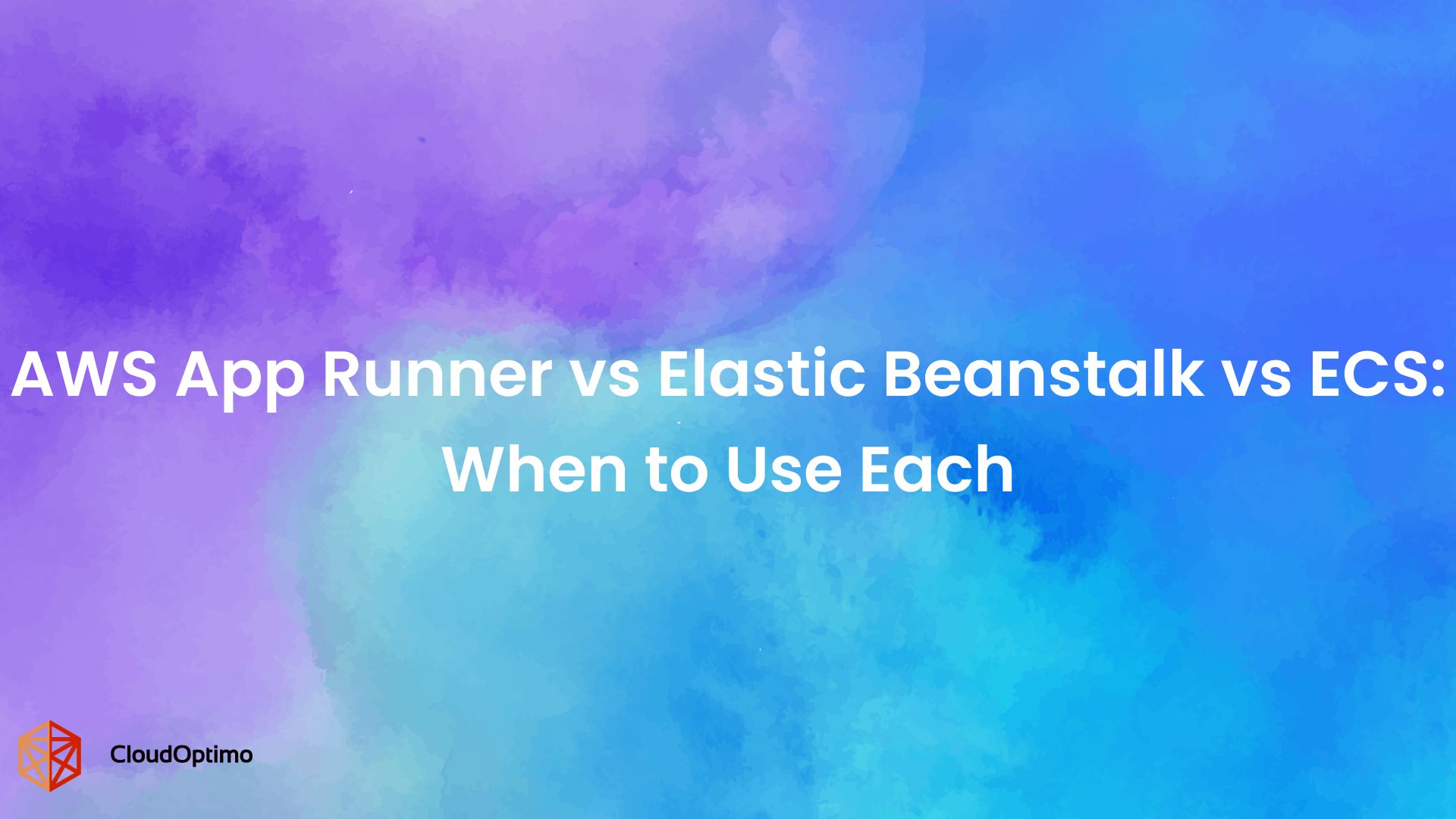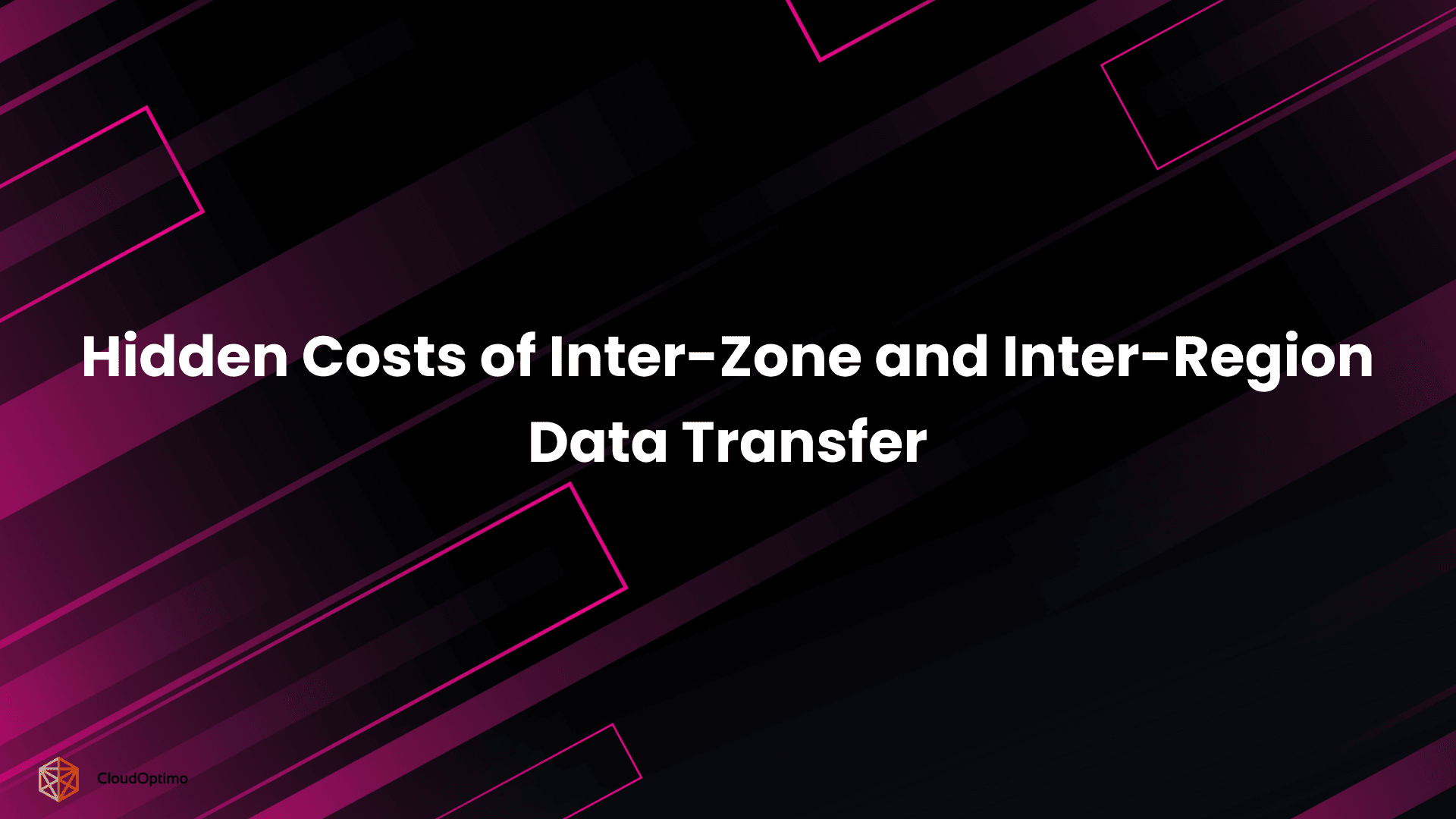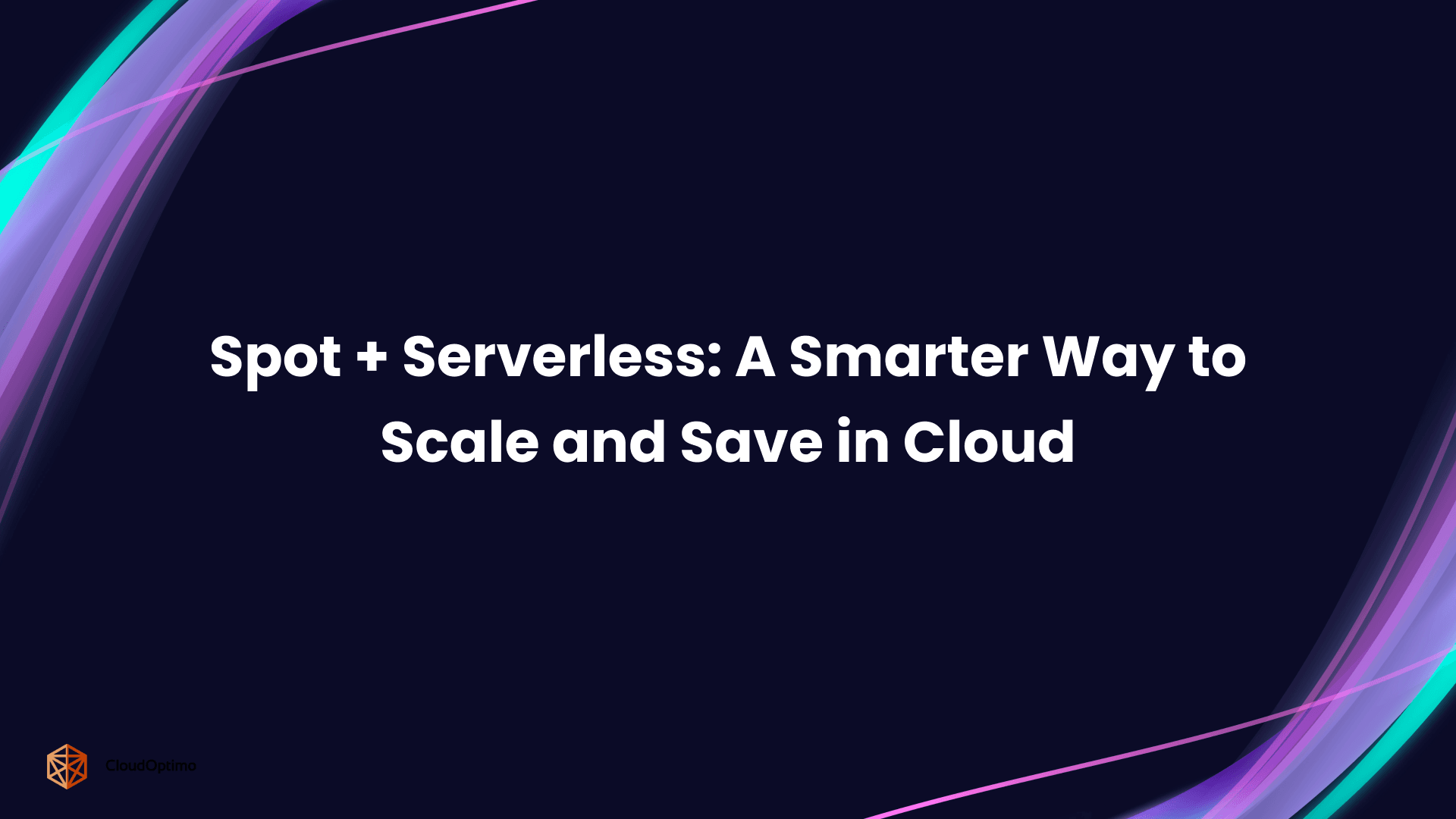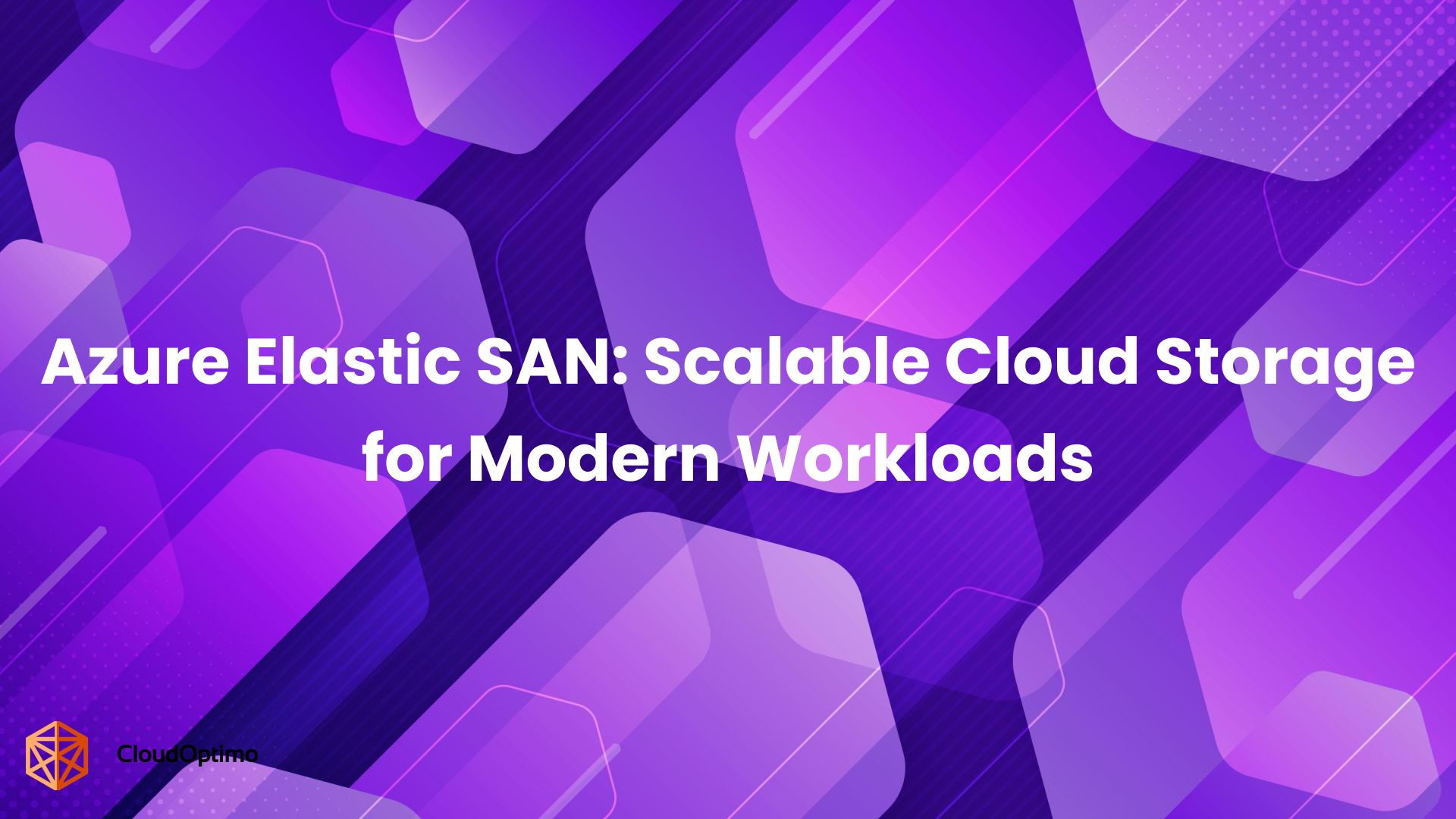As organizations rapidly adopt cloud technologies, managing cloud costs has become a critical priority. While cloud platforms offer flexibility, scalability, and speed, they also introduce financial complexity. Without a structured approach, organizations often struggle to understand where and why cloud expenditures are occurring.
Two essential practices that help address this challenge are cloud tagging and cost attribution. These practices provide the visibility and accountability needed to manage, optimize, and justify cloud spending across various business functions.
The Problem of Visibility in Cloud Spend
A single invoice can include thousands of line items, each linked to different resources, regions, or services. Without a structured approach to organizing this data, it becomes difficult to answer even basic questions:
- Which teams are consuming the most resources?
- Which projects are driving costs?
- Are there underutilized services that should be optimized or decommissioned?
This lack of clarity affects several core business functions. Financial planning becomes reactive rather than strategic. Incomplete data restricts cost optimization. Accountability is difficult to enforce when no one can confidently link spending to specific owners or business units.
Addressing this challenge requires more than manual effort or periodic audits. It demands a consistent method of categorizing cloud resources in a way that aligns with business objectives.
The Foundation for FinOps
This is where FinOps (Financial Operations) comes in. FinOps is a cloud financial management discipline that helps organizations align financial accountability with cloud operations. It brings together engineering, finance, and business stakeholders to collaborate around cloud spending decisions.
Tagging and cost attribution are fundamental to FinOps. They enable the three core principles that drive effective cloud financial management:
- Visibility: Clearly understanding who is using what, and how much it costs.
- Accountability: Ensuring each team or business unit is responsible for its cloud consumption.
- Optimization: Using accurate data to make informed decisions that reduce waste and improve efficiency.
By implementing proper tagging and cost attribution, organizations create the transparency required to manage cloud spend proactively, transforming cost data from a reporting challenge into a strategic asset.
What Is Cost Attribution?
Cost attribution is the process of assigning cloud expenses to specific products, departments, business units, or customer-facing applications. It enables organizations to translate raw cloud billing data into a clear understanding of where spend is occurring and why.
Rather than analyzing thousands of undifferentiated billing line items, teams can view costs grouped by purpose, such as feature development, testing environments, or client-specific workloads. This level of granularity improves business alignment and accountability.
For example, a fintech company running multiple services across cloud regions may attribute compute and storage costs to its retail banking and enterprise API divisions separately. This visibility helps each division manage its cloud budget, measure unit economics, and plan more effectively.
Strategic benefits of cost attribution include:
- Informed financial planning: Costs are linked directly to projects or services, improving budget accuracy and forecasting
- Business unit accountability: Teams understand their share of cloud spend and manage it proactively
- Support for internal chargeback or showback: Organizations can report or bill usage fairly, encouraging responsible consumption
- Better investment decisions: Leadership can assess the ROI of cloud spending by business line or customer segment
Cost attribution gives structure to cloud finances. But to work well, it relies on complete and consistent metadata, which is where tagging plays a critical role.
Linking Spend to Projects, Teams, and Business Units
When tags are applied properly, cost attribution becomes a structured and scalable process. Each tagged resource can be traced back to a specific owner or group, which allows for more precise analysis and reporting.
This approach offers several key benefits:
- Improved Budget Planning – Teams can receive and manage cloud budgets based on actual usage.
- Accurate Forecasting – Spending trends can be analyzed over time to support financial planning.
- Clear Accountability – Cloud cost ownership is transparent and visible, which eliminates uncertainty.
- Better Governance – Resources can be evaluated in the context of business value and compliance.
Ultimately, cost attribution ensures that cloud investments are aligned with business needs and that every dollar spent in the cloud is accounted for and justified.
What Is Cloud Tagging?
Cloud tagging is the practice of adding metadata to cloud resources to describe their purpose, ownership, or usage. These metadata elements are added in the form of key-value pairs, such as Project: CRM-Migration or Environment: Production, which adds context to how a resource is used, who owns it, or what function it supports.
In large and complex environments, resources can quickly multiply across accounts, regions, and services. Without tags, cloud resources appear as anonymous entries in billing reports. With consistent tagging, organizations can categorize resources for a wide range of use cases: cost tracking, compliance, security, automation, and more.
When applied correctly, tagging answers important operational and financial questions, including:
- Who is responsible for this resource?
- What business activity or function does it support?
- Is it part of development, testing, or production?
- Which project or application is it linked to?
These tags not only help organize infrastructure but also enable cost attribution. When every compute instance, database, or storage bucket is tagged correctly, financial analysts and operations teams can group usage meaningfully - by department, business function, or customer.
Tagging also lays the groundwork for policy enforcement, lifecycle management, and automated optimization.
To be effective, tagging must be:
- Strategic: Aligned with business goals, not just technical convenience
- Consistent: Applied uniformly across services, teams, and cloud providers
- Maintained: Periodically reviewed, cleaned, and updated to reflect organizational changes
In essence, tagging transforms cloud infrastructure into data that can be measured, governed, and optimized. It is the essential input that powers accurate cost attribution.
Real-World Examples of Tags
In practice, tags vary depending on the organization’s structure and objectives. Some common examples include:
- Project: CRM-Migration - identifies the initiative or application
- Environment: Production - specifies the deployment stage
- Department: Finance - links the resource to an internal team
- Owner: [email protected] - assigns responsibility
- CostCenter: 10234 - connects usage to financial tracking
Each of these tags adds clarity to the resource’s purpose and financial impact, enabling more accurate tracking and accountability.
Common Tagging Keys and Values
Although tagging schemes should be adapted to business needs, some keys are widely used due to their consistency and relevance. These include:
- Project – Associates the resource with a specific initiative or workload
- Environment – Classifies usage stage (such as development, staging, or production)
- Owner – Identifies the individual or team responsible for the resource
- CostCenter – Aligns the resource with internal accounting or budget codes
- BusinessUnit – Maps the resource to an organizational division
- Application – Specifies the service or product the resource supports
When applied uniformly, these tags provide a structured view of cloud operations. They enable organizations to track usage, monitor budgets, and align technology costs with business objectives.
Why It’s Hard Without Proper Tagging?
In many organizations, cloud adoption moves faster than governance. Resources are created in minutes, often by different teams, across different regions and accounts. But without a structured tagging approach, there is no clear way to understand what it all costs, or who is responsible.
Take a mid-sized company spending $500,000 each month on cloud services. When the invoice arrives, finance finds over 20,000 line items, most of which are labeled with generic service names and lack meaningful tags. In practice, this means more than 60% of the monthly spend, about $300,000, is marked as “unallocated.” No one can say with certainty which project, product, or department is responsible for it.
This lack of structure creates friction across teams. A product team may exceed its budget by 40%, yet no one can explain which resources caused the overspend. Engineering might be asked to reduce cloud usage, but it has no clear view of which workloads are unnecessary or idle. Finance often spends days manually sorting through billing data just to generate a basic report. At the same time, leadership sees a rising cloud bill but cannot confidently link that spend to specific outcomes or business value.
The key problems caused by missing or inconsistent tagging include:
- Unclear ownership: When resources are not tagged properly, no team can be held accountable for how or why they are used.
- Unreliable budgets: Without attribution, it's nearly impossible to forecast or track spending against project plans.
- Wasted resources: Opportunities to reduce costs are overlooked because teams lack visibility into usage patterns.
- Slow reporting: Finance teams must rebuild context manually, which wastes time and delays insight.
This isn't just a reporting issue. It leads to delays, miscommunication, and missed opportunities. When cloud costs are hard to understand, it becomes difficult for teams to work together, plan effectively, or make timely decisions.
Why Tagging and Cost Attribution Go Hand in Hand?
Once organizations recognize how poor visibility increases waste and delays accountability, they begin to see tagging and cost attribution not just as operational tasks, but as tools for financial control and strategic planning.
Tagging defines what a resource is, who owns it, and why it exists. Cost attribution transforms that metadata into financial insight. The value isn't in the tags alone, but in how they enable organizations to link every cloud dollar to a clear business purpose.
Consider a company with a monthly cloud spend of $700,000. Before implementing a consistent tagging strategy, more than 50% of the spend of around $350,000 was unallocated. Finance teams spent weeks compiling incomplete reports. Engineering teams lacked clarity on which workloads were contributing to costs. After introducing proper tagging and attribution, the organization reduced unidentified spend to below 10% in just three months. Teams discovered nearly $90,000 in redundant or underused resources, which were reallocated to higher-priority initiatives.
The impact of well-aligned tagging and attribution includes:
- Reliable reporting for cloud financial analysts and FinOps teams: Structured tagging enables near real-time cost breakdowns without the need for manual intervention.
- Clear accountability for application owners and business unit leads: Each team can view their actual cloud usage and take ownership of their resource consumption.
- Informed decisions for department heads and product managers: Budget allocations and roadmap priorities are guided by accurate, project-level cost insights.
- Operational efficiency for cloud operations and infrastructure managers: Resource lifecycles are monitored continuously, allowing teams to identify and eliminate waste proactively.
Together, tagging and cost attribution create a system where every resource has context, every cost has ownership, and every decision is backed by data.
Enabling Data-Driven Decisions
Tagging and cost attribution do more than help track expenses - they form the foundation for data-driven decision-making across the organization. When cloud resource usage is clearly labeled and accurately attributed, teams can move from guesswork to actionable insight.
With consistent tagging and well-maintained cost attribution, business leaders and technology stakeholders can:
- Identify high-cost services that require optimization or redesign
- Detect unused or underutilized resources that can be decommissioned or right-sized
- Prioritize strategic investments by linking cloud spend to specific products, customers, or outcomes
- Support accurate budgeting and forecasting, grounded in real usage trends and historical allocation data
For example, if consistent tagging shows that 25% of total compute spend is tied to a specific environment, cost attribution can then connect that usage to its owning department or product line. Leadership can assess whether the spend aligns with expected outcomes or revenue contribution. Similarly, if monthly storage costs increase by 15% in one unit, the organization can trace the attribution and tags to quickly identify the source and address it before it impacts broader budgets.
Ultimately, decisions backed by clear, reliable tagging and attribution data lead to improved performance, greater cost efficiency, and stronger alignment between cloud investments and business priorities.
Quick Wins You Can Implement Today
Improving cloud tagging and cost attribution does not always require a large-scale transformation. Small, focused actions can generate immediate visibility and lay the groundwork for long-term improvements. These initial steps help reduce untracked spend and increase accountability from day one.
- Tag new resources at the time of creation
Ensure all newly provisioned cloud resources include key tags such as Project, Environment, and Owner. This prevents untagged growth and establishes consistency from the start. - Prioritize tagging of high-cost resources
Begin with the top 10–20% of resources by spend. Even partial attribution for large services can significantly improve visibility into cost drivers. - Use cloud-native reporting tools
Platforms like AWS Cost Explorer, Azure Cost Management, and GCP Billing Reports offer built-in views of current tag coverage. These can highlight untagged or incorrectly tagged resources. - Define and enforce a basic tag policy
Start with a small, required set of tags that support attribution - typically Cost Center, Application, or Team. Make this minimum set mandatory across all accounts or projects. - Enable detection of untagged resources
Use automation tools or cloud rules to monitor for untagged assets and flag them for review. This creates a feedback loop that supports ongoing compliance.
Each of these actions delivers real benefits within days or weeks. They do not require significant overhead but can immediately reduce unallocated spend, improve reporting accuracy, and support early-stage FinOps adoption.
Tagging Best Practices
- Start with a Strategy, Not Just Tools
A tagging strategy should align with your organization's financial structure and operational goals. Begin by defining what business questions tagging and cost attribution need to answer, such as “Which team owns this resource?” or “How much does this application cost per month?”, and build your tagging approach around those outcomes.
- Keep It Consistent Across Teams and Services
Standardized keys, formats, and naming conventions are essential. Inconsistencies (like Dept vs. Department) can break attribution models and lead to fragmented data. Uniform tagging ensures accurate aggregation and reporting across projects, departments, and cloud accounts.
- Use Automation Wherever Possible
Manual tagging does not scale. Automation via policies, deployment scripts, or infrastructure-as-code ensures tags are applied consistently and in real time. This also reduces errors that compromise both tagging quality and attribution accuracy.
- Maintain a Tagging Policy and Dictionary
Establish a centralized reference for approved tags, their purpose, and expected values. A living tagging dictionary keeps teams aligned and helps avoid duplication. It also serves as the foundation for attribution rules that convert tag data into meaningful financial insights.
Note - A good tagging strategy should match how your organization tracks and reports cloud costs. Tags should not only describe technical details but also help link costs to the right team, product, or department. If this connection is missing, even well-tagged resources may not give useful cost insights. That’s why tagging and cost attribution should be planned together, reviewed often, and adjusted based on how your business manages its budgets.
Common Tagging Mistakes to Avoid
- Too Many Tags, Too Little Meaning
Adding numerous irrelevant or redundant tags clutters the dataset and makes it harder to extract actionable insights. Tags should be limited to those that directly support reporting, accountability, and cost attribution.
- Inconsistent Naming Conventions
If different teams use different naming patterns (e.g., OwnerName, owner, TeamLead), cost attribution logic can break, leading to inaccurate or incomplete reporting.
- Neglecting to Monitor and Clean Tags
Tag sprawl leads to outdated or unused metadata that distorts attribution. Regular audits are necessary to maintain both the integrity of tagging and the accuracy of cost reporting.
- Relying on Manual Effort Alone
Without automation, manual tagging is time-consuming and error-prone. This undermines the reliability of the data used for attributing costs, particularly at scale.
Note - A common mistake is thinking that tagging by itself is enough for accurate cost attribution. But if tags are not checked against billing data or if the cost rules don’t match how your business is organized, the results can be wrong. It’s important to involve team leads and department heads to review how costs are linked and use cost dashboards to make sure the data is correct.
Cultural Shift Required
Technical solutions alone are not sufficient. For tagging and cost attribution to succeed, a change in team mindset and behavior is necessary.
How to Encourage Adoption Across Teams
- Communicate Business Impact
Explain how proper tagging supports financial transparency, enables cost control, and aligns with organizational goals. - Define Roles Clearly
Assign specific responsibilities for tagging to relevant teams such as DevOps, Finance, and IT Governance. - Provide Training and Documentation
Offer clear guidelines on approved tags, usage policies, and tools to apply them. - Incentivize Compliance
Integrate tagging practices into performance reviews, project requirements, or audit processes.
Addressing Common Resistance
- Perceived Complexity
Simplify the tagging framework and avoid unnecessary tags that may confuse users. - Lack of Time or Priority
Emphasize tagging as a standard operational requirement, not an optional task. - Unclear Ownership
Ensure that resource owners are identified and accountable for maintaining accurate tags.
Creating a culture that values tagging and cost accountability ensures long-term success and consistent implementation across the organization.
Tools and Services That Can Help
Most major cloud platforms offer built-in tools to help teams view tags, monitor usage, and track costs. In more complex or multi-cloud environments, third-party platforms may provide broader visibility, standardization, and cross-platform insights. These tools make it easier to enforce policies, detect missing or incorrect tags, and improve attribution accuracy.
Automation plays a critical role. It reduces human error by applying tags automatically, flagging untagged resources, and ensuring that cost data is linked to the correct teams or projects. More advanced systems can even use artificial intelligence to highlight unusual spending patterns or suggest improvements to tagging structures.
While specific tool choices will vary, organizations should look for capabilities such as:
- Automatic tagging at resource creation
- Real-time visibility into tag completeness
- Cross-cloud support for unified tagging policies
- Anomaly detection and usage pattern analysis
Technology is not a substitute for process, but when aligned with strong governance and a clear tagging framework, it enables both tagging and cost attribution to scale with the business.
Tagging in a Multi-Cloud or Hybrid Cloud World
In a multi-cloud or hybrid cloud setup, managing cloud spend becomes more complex. Each cloud provider - AWS, Azure, Google Cloud, and others has different tagging rules. If tags are inconsistent, it becomes harder to connect usage with cost. But tagging alone is not enough - cost attribution must also work across platforms to provide a full picture of where money is going and why.
The challenge is twofold:
- Tagging must be standardized across environments, so data can be trusted and used across tools and teams.
- Cost attribution must align with business structures, so spend from different clouds maps clearly to departments, products, or projects.
Without this alignment, visibility suffers. For example, a global team using both AWS and Azure may tag resources differently in each environment. As a result, a shared service might appear twice in reporting, or not at all. Finance teams may end up guessing which cost belongs where, and product leaders may not see the true cost of their workloads.
To address this, organizations should:
- Define a single tagging framework with shared fields and consistent values across all cloud providers.
- Use centralized tools or dashboards to normalize tags and link them to cost centers or business units.
- Ensure attribution logic is consistent, so reports reflect the same structure across environments, even if the source data differs slightly.
- Set accountability by involving IT, finance, and business teams to validate tagging and attribution accuracy.
When both tagging and cost attribution are aligned across clouds, organizations gain the visibility they need to control costs, plan accurately, and scale with confidence.
Your First 90 Days: Building Cloud Cost Visibility
In the first three months of implementing a cloud tagging and cost attribution strategy, the goal is not to reach perfection, but to establish clarity, ownership, and momentum. These early efforts form the groundwork for long-term financial visibility and control.
Days 1–30: Align on Goals and Define the Essentials
Start by establishing a shared understanding of what tagging and cost attribution need to accomplish in your organization. Focus on the business outcomes, not just technical requirements.
Speak with stakeholders across product, finance, and operations to identify:
- Which teams need cost visibility and why
- What data is missing in the current reports
- How untagged or misattributed spend is impacting decisions
Use this insight to define a small, focused set of required tags - for example:
Project, Environment, Owner, CostCenter.
Avoid complexity at this stage. Consistency matters more than coverage.
Start tagging all new resources from this point forward. Do not delay action while waiting to tag historical assets.
Days 31–60: Connect Usage to Business Context
With a tagging baseline in place, shift the focus toward making data useful for cost attribution. Begin aligning resource usage with actual projects, departments, or cost centers.
In this phase:
- Use native cloud tools (AWS Cost Explorer, Azure Cost Management, etc.) to view cost breakdowns based on existing tags.
- Identify the top 10–20% of high-cost untagged resources and prioritize them for attribution.
- Start producing simple attribution reports to share with team leads and department heads.
Finance teams should begin to see how spending maps to business units. Engineering teams should start receiving feedback on usage patterns tied to their environments. This cross-functional visibility builds accountability and trust.
Days 61–90: Automate, Measure, and Improve
Now that tagging and attribution are functional, the focus shifts to scale and improvement. Start addressing inconsistencies and introducing automation to ensure long-term sustainability.
At this point:
- Automate tag enforcement using policies, Infrastructure as Code, or scripting tools.
- Implement a validation process to flag missing or incorrect tags.
- Set up dashboards or scheduled reports for ongoing attribution insights.
Define a few key metrics to measure impact:
- Percentage of resources with valid business tags
- Share of total cloud spend that is correctly attributed
- Reduction in “unallocated” cloud costs over time
By Day 90, your organization should not only have more reliable cost data it should be using that data to support decisions, flag anomalies, and reduce waste.





